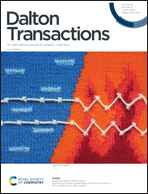Functional UiO-66 for highly selective adsorption of N-nitrosodipropylamine: adsorption performance and mechanisms†
Abstract
N-Nitrosodipropylamine (NDPA) is a class of nitrogenous disinfection by-products (N-DBPs) with high toxicity. Although NDPA present in water bodies is at relatively low concentrations, the potential risk is high due to its high toxicity and bioaccumulation. Metal–organic frameworks (MOFs), a new type of porous material with remarkable functionality, have shown great performance in a wide variety of applications in adsorption. This is the first study investigating the adsorption of MOFs on NDPA. Herein, UiO-66 with –NH2 and imidazolium functional groups were synthesized by modifying UiO-66 after amination. Adsorption kinetics and isotherm models were used to compare the adsorption properties of the two materials for low-concentration NDPA in water. The results showed that the behavior of all the adsorbents was consistent with the Langmuir model and the pseudo-second-order model and that the adsorption was homogeneous chemisorption. The structures of the nanoparticles were characterized by FTIR, zeta potential, XRD, SEM and BET measurements. Based on the characteristics, four adsorption mechanisms, namely electron conjugation, coordination reaction, anion–π interaction, and van der Waals forces, were simultaneously involved in the adsorption. The influencing factor experiment revealed that the adsorption of UiO-66-NH2 and (I−)Meim-UiO-66 involved hydrogen bonding and electrostatic interactions, respectively.



 Please wait while we load your content...
Please wait while we load your content...